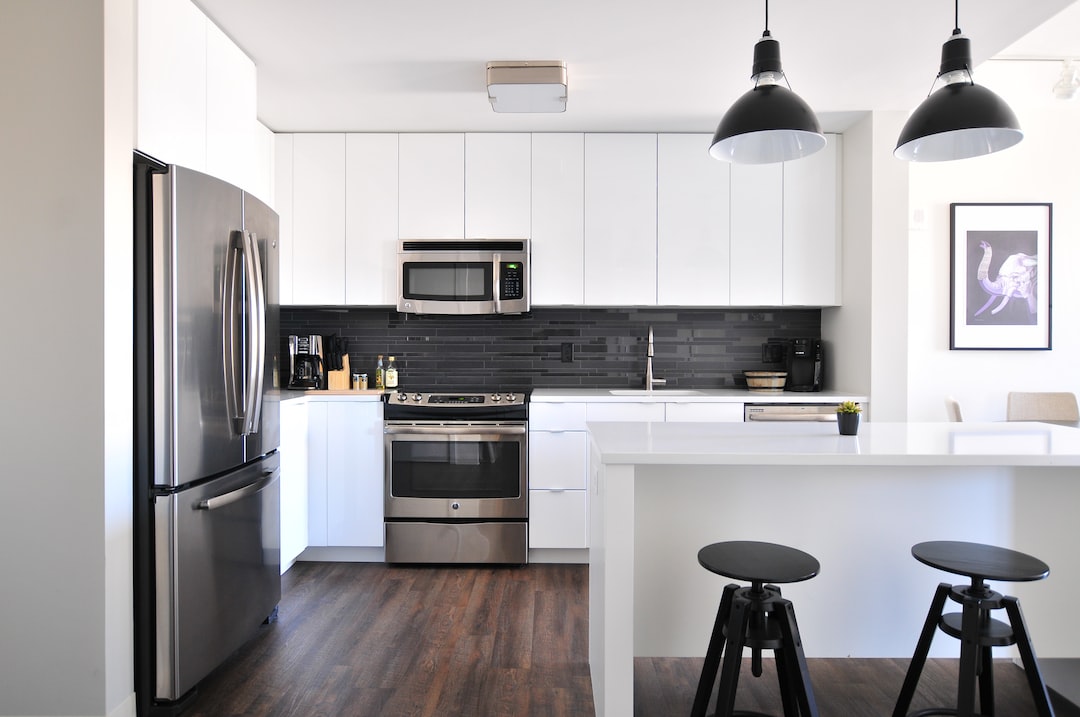Renovating your home can bring a multitude of benefits, making it a worthwhile investment for homeowners. Whether you’re looking to increase the value of your property, improve functionality, or enhance its aesthetic appeal, a renovation project can help you achieve these goals. In 2023, with the housing market booming and interest rates remaining low, it’s an opportune time to consider renovating your home.
One of the key benefits of renovating your home is the potential increase in its value. By updating and modernizing your property, you can attract potential buyers and command a higher price if you decide to sell in the future. Additionally, renovations can improve the functionality of your home, making it more comfortable and convenient for you and your family. Whether it’s expanding your kitchen, adding an extra bathroom, or creating a home office space, renovations can cater to your specific needs and lifestyle.
Another important aspect to consider when renovating your home is the aesthetic appeal. A well-designed and visually appealing home not only creates a welcoming atmosphere but also adds to its overall value. By updating outdated fixtures, choosing modern color schemes, and incorporating stylish design elements, you can transform your home into a beautiful space that reflects your personal style.
However, it’s important to approach a renovation project with careful planning and realistic goals. Setting a budget, prioritizing needs, and making informed decisions are crucial steps in ensuring a successful renovation. By taking the time to plan ahead and consider all aspects of the project, you can avoid unnecessary stress and setbacks along the way.
Set a Budget: How to Determine Your Renovation Costs
Before embarking on a renovation project, it’s essential to determine your budget. Setting a budget will help you stay on track financially and avoid overspending. To create an accurate budget, start by researching costs associated with the specific renovations you have in mind. This includes materials, labor, permits, and any additional expenses that may arise.
It’s important to prioritize your expenses and allocate funds accordingly. Identify the areas of your home that require the most attention and allocate a larger portion of your budget to those areas. For example, if your kitchen is outdated and in need of a complete overhaul, it may be wise to allocate a significant portion of your budget to that specific renovation.
When creating your budget, it’s also crucial to factor in unexpected expenses. Renovation projects often come with surprises, such as hidden structural issues or unforeseen complications. It’s advisable to set aside a contingency fund of around 10-20% of your total budget to account for these unexpected costs.
Once you have determined your budget, it’s important to stick to it. Avoid the temptation to overspend or make impulsive decisions that can lead to financial strain. By carefully managing your budget and making informed choices, you can ensure that your renovation project stays within your financial means.
Prioritize Your Needs: Identifying the Most Important Areas to Renovate
When renovating your home, it’s important to prioritize your needs based on your lifestyle and budget. Consider the areas of your home that require the most attention and focus on those first. This will ensure that you address the most critical aspects of your home and make the most significant improvements.
The kitchen is often considered the heart of the home and is a popular area for renovation. Upgrading appliances, installing new countertops, and adding storage solutions can greatly enhance the functionality and aesthetic appeal of your kitchen. Additionally, updating the flooring and lighting can transform the space into a more inviting and modern area.
Bathrooms are another area that can greatly benefit from renovation. Creating a spa-like retreat in your bathroom can add value to your home and provide a relaxing oasis for you and your family. Consider upgrading fixtures, adding luxurious features such as a soaking tub or rainfall showerhead, and incorporating ample storage solutions to keep the space organized and clutter-free.
Flooring is another important aspect to consider when prioritizing your renovation needs. Replacing outdated or worn-out flooring can instantly transform the look and feel of your home. Hardwood flooring is a popular choice for its durability and timeless appeal, while tile offers a wide range of design options and is ideal for high-traffic areas. Carpet can provide warmth and comfort in bedrooms and living areas, but it may require more maintenance and be less durable in the long run.
By identifying the most important areas to renovate based on your needs and budget, you can ensure that your renovation project is focused and impactful.
DIY vs. Hiring Professionals: Pros and Cons of Each Option
When it comes to renovating your home, you have the option to either take on the project yourself or hire professionals. Both options have their pros and cons, and it’s important to carefully consider which approach is best suited for your specific needs and abilities.
One of the main advantages of DIY renovations is cost savings. By taking on the project yourself, you can avoid labor costs and potentially save a significant amount of money. Additionally, DIY renovations allow you to have complete control over the project, from design choices to execution. This can be a rewarding experience for those who enjoy hands-on work and have the necessary skills.
However, DIY renovations also come with potential drawbacks. One of the main challenges is the lack of expertise and experience that professionals bring to the table. Without proper knowledge and skills, you may encounter difficulties or make mistakes that could end up costing you more in the long run. Additionally, DIY renovations can be time-consuming, especially if you have limited availability due to work or other commitments.
On the other hand, hiring professionals can provide numerous benefits. Professionals have the necessary expertise and experience to handle complex renovation projects efficiently and effectively. They can offer valuable insights and recommendations based on their knowledge of the industry. Hiring professionals also saves you time and effort, as they will take care of all the necessary tasks, from design to execution.
However, hiring professionals can be more expensive compared to DIY renovations. Labor costs, design fees, and materials can add up quickly, potentially exceeding your budget. It’s important to carefully consider your financial situation and weigh the benefits against the costs before making a decision.
Ultimately, the choice between DIY renovations and hiring professionals depends on your personal preferences, skills, and budget. It’s important to assess your abilities realistically and consider the complexity of the project before deciding which approach is best for you.
Choose Your Design Style: How to Create a Cohesive Look Throughout Your Home
When renovating your home, it’s important to choose a design style that reflects your personal preferences and creates a cohesive look throughout your space. A cohesive design creates a sense of harmony and flow, enhancing the overall appeal of your home.
Start by considering your personal style and the overall aesthetic of your home. Do you prefer a modern, minimalist look or a more traditional, rustic feel? Take into account the existing architectural features of your home and choose a design style that complements them.
Once you have determined your design style, it’s important to carry it throughout your home consistently. This means selecting materials, colors, and furnishings that align with your chosen style. For example, if you have chosen a modern design style, opt for sleek lines, neutral colors, and minimalist decor throughout your home.
Creating a cohesive look also involves considering the flow between different areas of your home. Ensure that there is a sense of continuity as you move from one room to another. This can be achieved through consistent flooring choices, color palettes, and design elements.
It’s important to note that creating a cohesive look doesn’t mean every room has to look identical. You can still incorporate individuality and personal touches while maintaining a cohesive overall design. The key is to strike a balance between consistency and uniqueness.
By choosing a design style that reflects your personal preferences and creating a cohesive look throughout your home, you can enhance its overall appeal and create a space that feels harmonious and inviting.
Flooring Upgrades: The Best Options for Durability and Aesthetic Appeal
When renovating your home, upgrading your flooring is an important aspect to consider. The right flooring can greatly impact the overall look and feel of your space, as well as its durability and functionality. There are several options available, each with its own advantages and considerations.
Hardwood flooring is a popular choice for its timeless appeal and durability. It adds warmth and character to any space and can be refinished multiple times to maintain its appearance. Hardwood flooring comes in various types, including oak, maple, and cherry, each with its own unique grain patterns and colors. However, hardwood flooring can be more expensive compared to other options, and it may require more maintenance to keep it in good condition.
Tile flooring is another popular choice, especially in areas prone to moisture such as bathrooms and kitchens. It offers a wide range of design options, from classic ceramic tiles to modern porcelain or natural stone tiles. Tile flooring is highly durable, easy to clean, and resistant to stains and water damage. However, it can be cold underfoot and may require professional installation for best results.
Carpet is a comfortable and cozy option for bedrooms and living areas. It provides warmth and insulation, making it ideal for colder climates. Carpet comes in various styles, colors, and textures, allowing you to choose the perfect option for your space. However, carpet may require more maintenance compared to other flooring options, as it can trap dust and allergens.
When choosing the best flooring option for your renovation project, consider factors such as durability, aesthetic appeal, and budget. It’s important to select a flooring material that suits your specific needs and complements the overall design of your home.
Kitchen Renovations: Tips for Maximizing Space and Functionality
The kitchen is often considered the heart of the home, and a well-designed kitchen renovation can greatly enhance the functionality and aesthetic appeal of your space. When planning a kitchen renovation, it’s important to prioritize maximizing space and functionality.
Start by assessing your current kitchen layout and identifying areas that can be improved. Consider the workflow in your kitchen and how you can optimize it for efficiency. This may involve reconfiguring the layout, adding or removing walls, or expanding the space if possible.
When choosing appliances for your kitchen renovation, opt for energy-efficient options that will not only save you money on utility bills but also reduce your carbon footprint. Look for appliances with the Energy Star label, which indicates that they meet strict energy efficiency guidelines.
Storage solutions are another important aspect to consider in a kitchen renovation. Maximize storage space by incorporating cabinets with pull-out shelves, deep drawers, and built-in organizers. Consider utilizing vertical space with tall cabinets or open shelving to store items that are used less frequently.
Lighting is crucial in a kitchen renovation, as it affects both functionality and ambiance. Incorporate a combination of task lighting, such as under-cabinet lights or pendant lights above the island, and ambient lighting to create a warm and inviting atmosphere.
By maximizing space and functionality in your kitchen renovation, you can create a space that is not only beautiful but also practical for everyday use.
Bathroom Makeovers: Ideas for Creating a Spa-Like Retreat
Creating a spa-like retreat in your bathroom can add value to your home and provide a relaxing oasis for you and your family. When planning a bathroom renovation, consider incorporating luxurious features and thoughtful design elements to enhance the overall experience.
Start by choosing fixtures that exude elegance and sophistication. Opt for high-quality faucets, showerheads, and hardware that not only look beautiful but also provide a luxurious feel. Consider incorporating features such as a rainfall showerhead, a freestanding bathtub, or a steam shower for the ultimate spa-like experience.
Lighting is another important aspect to consider in a bathroom renovation. Install dimmable lights to create a soothing ambiance and incorporate task lighting around the vanity area for optimal visibility. Consider adding a statement chandelier or pendant lights to add a touch of glamour to the space.
Storage solutions are crucial in a bathroom renovation to keep the space organized and clutter-free. Incorporate built-in cabinets, floating shelves, or vanity units with ample storage space. Consider using baskets or decorative boxes to store toiletries and towels.
When choosing materials for your bathroom renovation, opt for natural and luxurious options. Marble or granite countertops, porcelain or natural stone tiles, and high-quality fixtures can elevate the overall look and feel of your space. Consider incorporating natural elements such as plants or wood accents to create a calming and serene atmosphere.
By incorporating luxurious features, thoughtful design elements, and high-quality materials, you can transform your bathroom into a spa-like retreat that provides a sanctuary for relaxation and rejuvenation.
Lighting Solutions: How to Brighten Up Your Home and Save Energy
Lighting plays a crucial role in any home renovation project. It not only brightens up your space but also enhances its functionality and aesthetic appeal. When choosing lighting solutions for your home, it’s important to consider factors such as energy efficiency, functionality, and aesthetic appeal.
One of the key considerations in lighting is energy efficiency. Opt for LED (light-emitting diode) bulbs, which are more energy-efficient compared to traditional incandescent bulbs. LED bulbs consume less energy, last longer, and produce less heat. They are available in various color temperatures, allowing you to create the desired ambiance in your space.
In terms of functionality, it’s important to consider the different types of lighting needed in each area of your home. Task lighting is essential in areas where specific tasks are performed, such as the kitchen or home office. Consider under-cabinet lights, pendant lights, or desk lamps to provide focused illumination. Ambient lighting creates a warm and inviting atmosphere and can be achieved through recessed lights, chandeliers, or wall sconces. Accent lighting highlights architectural features or artwork and can be achieved through spotlights or track lighting.
Aesthetic appeal is another important aspect to consider when choosing lighting solutions. Lighting fixtures come in various styles, from modern and minimalist to traditional and ornate. Choose fixtures that complement the overall design of your space and add a touch of personality. Consider the size and scale of the fixtures in relation to the room to ensure a balanced and cohesive look.
It’s also important to consider natural light when planning your lighting design. Maximize natural light by incorporating large windows, skylights, or glass doors. This not only brightens up your space but also provides a connection to the outdoors.
By choosing energy-efficient lighting solutions, considering functionality, and incorporating aesthetically pleasing fixtures, you can brighten up your home while saving energy and enhancing its overall appeal.
Final Touches: Adding Personalized Details to Make Your Home Unique
Adding personalized details to your home is the final step in a renovation project and can make your space truly unique. These final touches can enhance the overall aesthetic and reflect your personal style. One way to add personalized details is through artwork and decor. Choose pieces that resonate with you and complement the overall design of your home. This could include paintings, sculptures, or even photographs that hold sentimental value. Another way to personalize your space is through the use of textiles and fabrics. Consider adding throw pillows, blankets, or curtains in patterns or colors that you love. These small additions can make a big impact and add warmth and personality to your home. Additionally, don’t forget about lighting. Selecting unique light fixtures or lamps can create a focal point in a room and add a touch of elegance or whimsy. Finally, don’t overlook the power of accessories. Displaying cherished mementos, books, or plants can add character and tell a story about who you are. By adding these personalized details, you can transform your house into a home that is truly one-of-a-kind.
Looking for a reputable renovation company for your home project? Check out this informative article on how to find a reputable renovation company. It provides valuable tips and advice on what to look for when hiring a renovation contractor. From checking their credentials to reading customer reviews, this article covers all the essential steps to ensure you choose the right company for your home renovation needs. Don’t miss out on this helpful resource!





